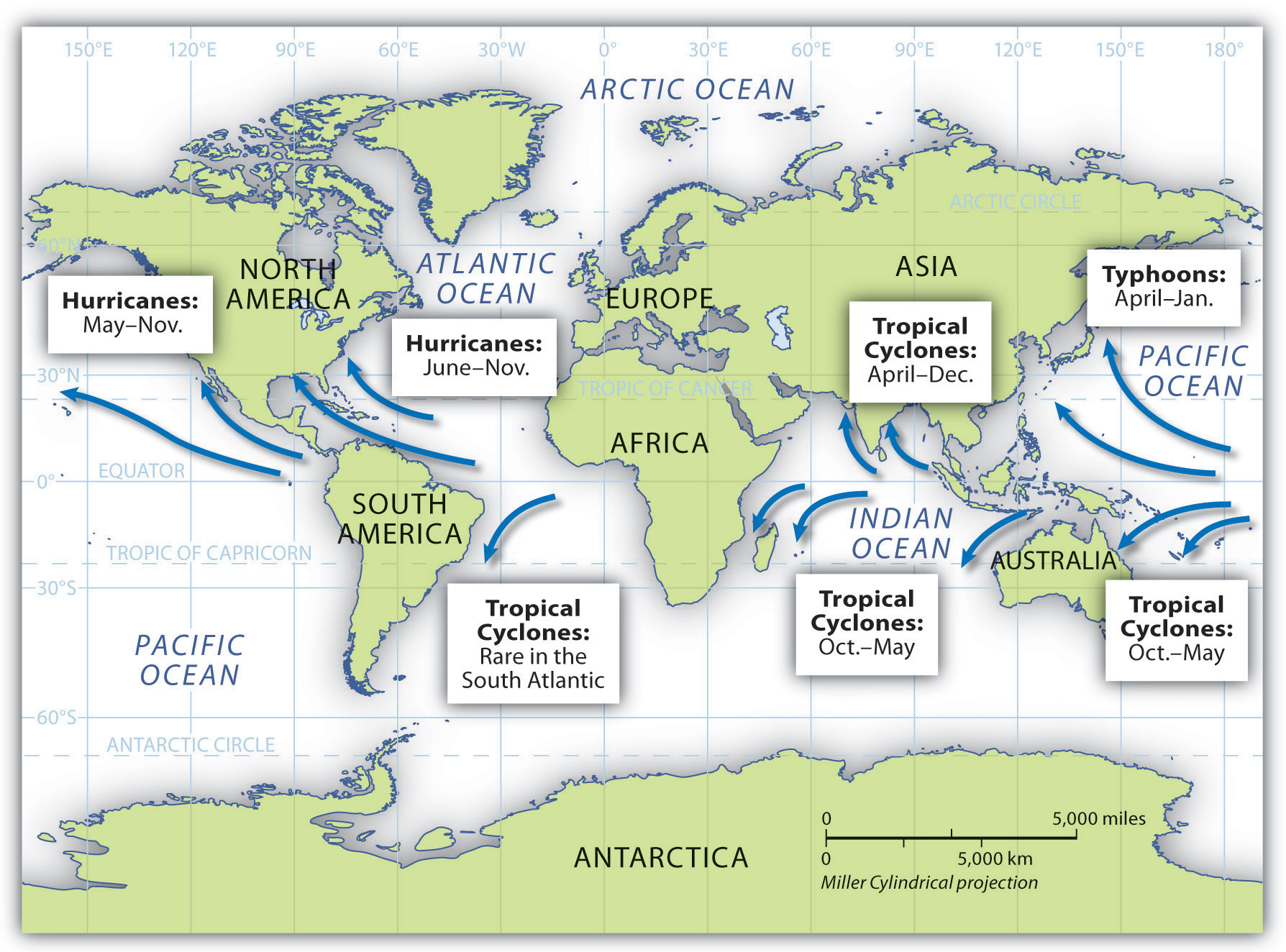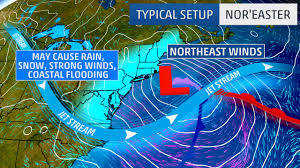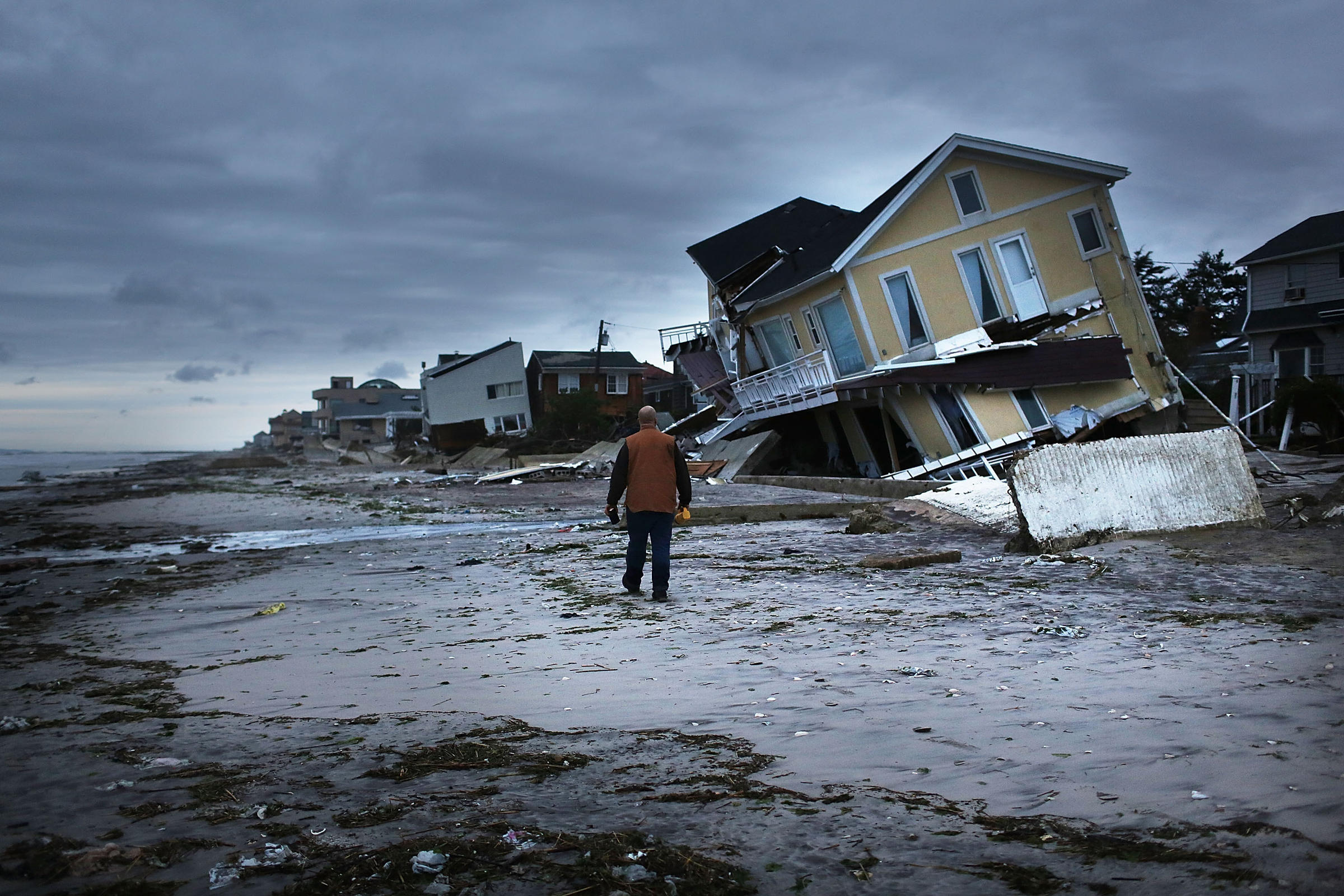Coming from the Jersey Shore, storms are followed and studied as they move along their path and disappear into the big Atlantic. The storms that make people along the coast sweat are Northeasters or Hurricanes that can bring destruction and even fatalities. Which one is worse depends. What are the differences & similarities between Nor’easters vs Hurricanes?
Both formed in the Atlantic
Both storms spin around the central low-pressure zone.
Both have an Eye
Cause destruction
Differences:
Hurricanes are born in the tropics season– from 6/1-11/30-fueled by high H2O temps.
Winds 74 mph +
Nor’easters are fueled by low H2O temps-season is from Sept-April
Winds-20-50 mph
People living in the coastal regions of the United States fear bigger and bigger storms that will pick up power coming from the North and the South building energy and power thousands of miles of open water.
What is a Nor’easter
A Nor’easter is a storm that forms along the East Coast of North America. Nor’easters are named after the direction from which the strongest winds typically blow over the northeast states, including New England and the Mid-Atlantic states. The powerful storms can happen normally between September and April and can bring wind, snow, rain, and flooding to these regions.
A Nor’easter can cover a large powerful area of low pressure along the East Coast of the United States that typically features winds from the northeast of the Atlantic Ocean hence the term “Nor’ easter.”
Sometimes they are associated with those slow-crawling storms making their way up the coast that bring huge amounts of snowfall with it. They will tend to develop between Georgia and New Jersey and about a hundred miles inland East or West will get the effects from the storm.
In most cases, they move northeastward and reach maximum intensity near New England or Canada’s Maritime Provinces. This event can bring coastal and inland flooding with rough seas to the areas surrounding it. When you hear about Nor’easters you will hear how they affect cities like Philadelphia, Washington D.C., New York City, and Boston. There are huge populations of people 100 miles off the coastal areas.
So when this type of event happens there could be huge economic loss where everything is stopped by massive amounts of snow or flooding.
How Is a Nor’easter Formed
The reason you hear about Nor’easters so much on the eastern seaboard is that the polar jet stream transports cold air southward out of Canada into the U.S., then eastward toward the Atlantic Ocean where warm air from the Gulf of Mexico and Atlantic tries to move northward.
This is considered a “classic” nor’easter and referred to as a “Miller Type-A” storm. Another way is the second type which originates in the Midwest and slides eastward toward the Appalachians. Once it hits the mountains, the storm loses its coherent low-pressure center, but the low redevelops along the East Coast and rides up the coast as a classic nor’easter would do. This is referred to as a “Miller Type-B” storm. A Nor’easter is characterized by a central low-pressure area that deepens dramatically as it moves northward along the U.S. East Coast.
The name came from the strong northeast winds that precede and accompany the storm as it passes over New England. When this type of storm event happens places like Pennsylvania get hit with the heaviest of snow storms.
According to the Weather Channel “In the beginning, it looks similar to a hurricane, thanks to an eye in the center of its low-pressure system. However, as the nor’easter tracks an oceanic route offshore of the East Coast, the storm’s already cool core experiences a drop in temperatures at higher levels of the troposphere (the lowest layer of the atmosphere, which reaches from the earth’s surface to 11 miles or 17 kilometers skyward) and leaves its hurricane-like roots behind. Hurricanes rarely reach the Mid-Atlantic or New England region, while nor’easters are known for making landfall almost exclusively in the area.”
Has it Ever Snowed in Florida?
Yes, but its rare, for snowfall to occur in Florida, the polar jet stream has to move towards the south and into the Gulf of Mexico through Texas, move with a cold front across Southern Florida, and then curve towards the Northeast before combining with cooling air in the frontal clouds. …………………………………………………………………………….. Read more
How are Hurricanes Formed

Unlike Nor’easters, Hurricanes usually are born in the tropical latitudes over the Atlantic Ocean,  typically between 0-30° north latitude in the northern hemisphere.
typically between 0-30° north latitude in the northern hemisphere.
They often begin as a small storm thunderstorm cluster moving off the coast of Africa or an area of low pressure known as an easterly wave in the Atlantic. Eventually, find their way into the Caribbean, the Gulf of Mexico, the North American mainland, or swing out to sea in the open Atlantic. Hurricanes are tropical. Hurricane season is between June 1 and November 30. Cruise ships do not usually operate in the Caribbean during this time.
Tropical cyclones occur in tropical regions over warm ocean water temperatures. In the North Atlantic, they are called hurricanes, in the North Pacific, they are called typhoons and in the Indian Ocean, they are called cyclones.
Rising air pulls water to the center of the storm, creating a storm surge, the most dangerous feature of the storm because of the immense flooding it can cause when reaching land.
Hurricanes derive their energy through latent heat from the warm ocean making them warm-core lows. Hurricanes start over warmer water whose temperature meets over 80 degrees.
As the air heats above the ocean water, it rises rapidly, drawing incoming air to replace the rising air and creating strong wind currents and storm conditions. The rapidly rising humid air then cools and condenses, resulting in heavy rains and a downdraft of cooler air. The rotation of the earth causes the storm to rotate in a cyclonic pattern. North of the equator, tropical storms rotate in a counterclockwise direction. South of the equator, tropical storms rotate in a clockwise direction.
How Are Tropical Storms Named?
Tropical storms are named by the World Meteorological Organization (WMO) & picked from a list that rotates every year for 6 years if they display a rotating circulation pattern & wind speeds reaching 39 miles per/hr & when the tropical storm’s wind speeds go above 74 mph its develops into a hurricane. ……………………………………………………………………….. Read more
Hurricane Winds vs Nor’easter Winds
Hurricanes start out as small tropical depressions with wind speeds between 25 and 38 mph. It’s the cyclonic motion and warm temperatures that feed the system. 
Once the system reaches 39 to 73 mph it’s upgraded to a Tropical Storm. Tropical depressions are numbered while tropical storms are named. When winds reach a sustained speed of seventy-four miles per hour, a storm is classified as a hurricane. The winds of a Nor’easter usually average 20 to 50 mph but at gusts of over 60 mph. The Nor’easter can last up to 2 days or so.
Some Nor’easters can cause large amounts of damage and just as much as a hurricane. Nor’easters and Hurricanes both form over the Atlantic Ocean. They’re both types of cyclones-a storm that has winds spiraling around a central low-pressure zone. Nor’asters happen in the northern hemisphere while Hurricanes happen in the Tropical latitudes.
Nor’easterns are fueled by cold water temperatures while Hurricanes are fueled by warm water temperatures of the Tropics. In the beginning, it looks similar to a hurricane, with an eye in the center of its low-pressure system. But as the nor’easter tracks an oceanic route offshore of the east coast, the storm’s already cool core experiences a drop in temperatures at higher levels of the troposphere
Which is the lowest layer of the atmosphere, that reaches from the earth’s surface to 11 miles or 17 kilometers skyward and leaves its hurricane-like roots behind. Hurricanes rarely reach the Mid-Atlantic or New England region, while Nor’easters are known for making landfall almost exclusively in the area. The mechanics are similar.
Was the Perfect Storm a Nor’easter
The 1991 notable event “Perfect Storm” that was made into a movie was a Nor’easter storm that was also called The Halloween Storm or the No Name Storm. Six Gloucester, Massachusetts, fishermen died as a result of the “Halloween storm” sinking the Andrea Gail. The tale of the storm and the doomed fishing vessel were depicted in the book and subsequent movie, “The Perfect Storm”
The Perfect Storm was similar to Hurricane Sandy which struck the East coast in October 2012. It was not comparable to the devastation that Sandy created. The Halloween Storm. It affected an area the size of New England to North Carolina. It absorbed Hurricane Grace which was a small short-lived hurricane.
Wave heights from this storm reached 100 feet. Winds at the peak of the storm reached 70 mph. Sandy’s winds and waves were higher. The Perfect Storm, also known as the Halloween Gale/Storm, was a nor’easter that absorbed Hurricane Grace and ultimately evolved into a small unnamed hurricane itself late in its life cycle.
The initial area of low pressure developed off the coast of Atlantic Canada on October 29. Sandy was similar in that it was a hurricane that came north from the tropics, then started to transform into an extratropical low before it slammed into the Jersey coast
- The Halloween storm caused $168 million damage and killed six people, the Federal Emergency Management Agency (FEMA) said.
- The storm moved over warm Gulf Stream waters and turned tropical, reaching hurricane strength on Nov. 1, 1991, yet it remained unnamed.
- Naming it as a hurricane would have caused confusion to the public, media and emergency officials, since most of the damage was caused while it was extratropical, the National Hurricane Center said at the time.
Was Superstorm Sandy a Hurricane or a Nor’easter
Superstorm Sandy was responsible for over 62 billion dollars in destruction and 125 lives in 2012. It also caused hundreds of millions of dollars in damage in the Caribbean and 71 deaths. Sandy developed first from a tropical wave in the western Caribbean Sea on October 22, quickly strengthened, and was upgraded to Tropical Storm six hours later.
Sandy turned as high as a Category 3 hurricane in the Caribbean and by the time it hit the States at Brigantine NJ. was downgraded to a Tropical Storm. Just as Hurricane Sandy moved up the eastern seaboard in New Jersey and into the Atlantic area, a cold water Nor’easter pushed it back keeping it pinned on the coast of New Jersey doing its thing for days in New Jersey and New York and other places along the Northeast coast before drifting off and weakening.
A Nor’easter could be blamed for the continued damage to the area and the length of time along with added strength that Sandy was handing out. Making it a “Perfect Storm” for the people of New York and New Jersey 10 years or so later.
- Listen to Local Officials for updates & stay out until they say it’s safe
- Beware of down power lines & dangerous debris
- Document damage with pictures
- Contact Insurance or FEMA
- Remove everything from inside
- Expose inside walls
- Remove insulation, sheetrock & wiring while drying the inside
- Treat for Mold …………………………………………………………………………………………………………………………. Read more
JimGalloway Author/Editor

References: What’s a Nor’ easter How do Nor’easters form
The Weather Channel: How are Nor’easters formed? The 1991’s Perfect Storm
